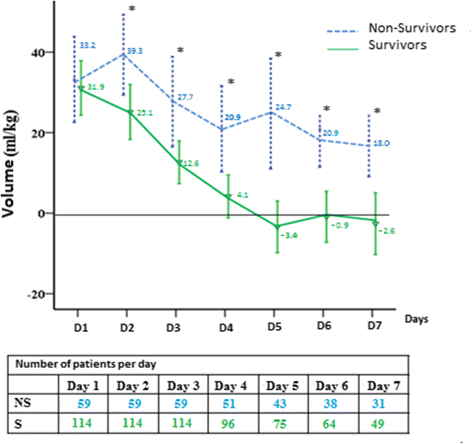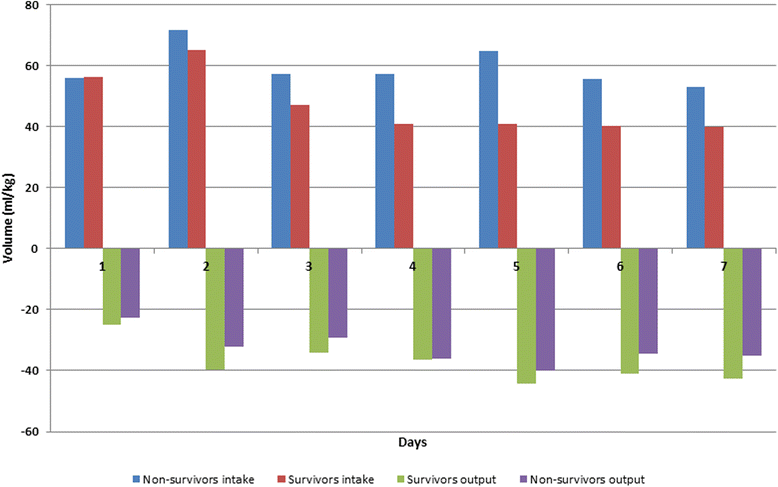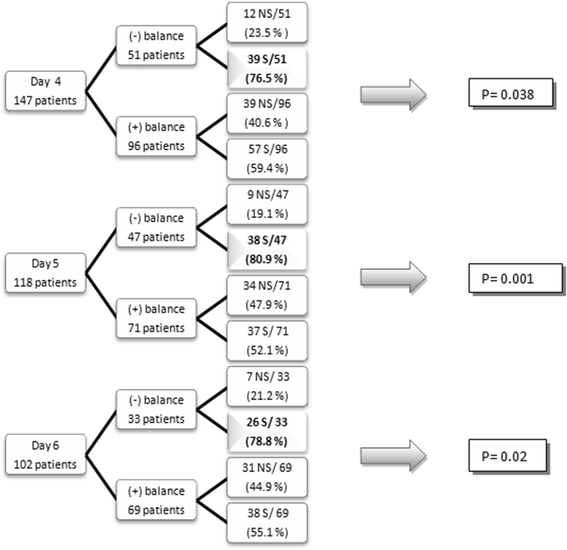A positive fluid balance is an independent prognostic factor in patients with sepsis
- PMID: 26073560
- PMCID: PMC4479078
- DOI: 10.1186/s13054-015-0970-1
A positive fluid balance is an independent prognostic factor in patients with sepsis
Abstract
Introduction: Intravenous fluid administration is an essential component of sepsis management, but a positive fluid balance has been associated with worse prognosis. We analyzed whether a positive fluid balance and its persistence over time was an independent prognostic factor in septic patients.
Methods: We prospectively studied fluid intake and output for 7 days in 173 consecutive adult patients treated for sepsis in our Department of Intensive Care.
Results: Of the 173 patients, 59 died (34 %). Mean daily fluid intake was higher in non-survivors than in survivors (59 ± 24 ml/kg vs. 48 ± 23 ml/kg, p = 0.03), but output volumes were similar. As a result, the daily fluid balance was more than twice as large in the non-survivors as in the survivors (29 ± 22 vs. 13 ± 19 ml/kg, p <0.001). Persistence of a positive fluid balance over time was associated with increased mortality. Using a multivariable time-dependent Cox model, a positive fluid balance was independently associated with higher mortality (adjusted hazard ratio 1.014 [1.007-1.022] per ml/kg increase, p <0.001).
Conclusions: Persistence of a positive daily fluid balance over time was quite strongly associated with a higher mortality rate in septic patients.
Figures



References
Publication types
MeSH terms
Substances
LinkOut - more resources
Full Text Sources
Other Literature Sources
Medical
Research Materials

